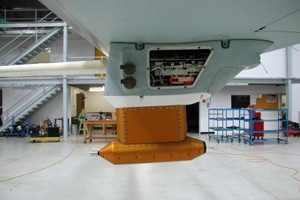Cloud Particle Imager (CPI)

General Information
The Cloud Particle Imager (CPI) represents a major advance in ice cloud microphysical instrumentation. Developed by SPEC INC. in 1997, the CPI is a major improvement on existing imaging/shadowing probes such as the PMS 2D-C. The CPI can image and count particles in the size range of 15-2500um, with the images having a nominal 2.3um resolution. Image analysis and data processing software provided with the probe takes particle size information (including area and volume) and ice crystal habit classification from the images to produce histograms etc. The CPI is especially suitable for use in ice and mixed phase clouds which typically have relatively low (compared to water clouds) particle concentration of 1000/L. The CPI may be used in much higher particle concentrations, but under these conditions while particle spectra are reliable, absolute particle concentrations are not due to coincidence errors in the particle detection system. While designed for aircraft use, and able to operate at any aircraft speed and altitude, the CPI, with the use of a suitable aspiration device may also be used for ground based, or lab studies.
Principle of Operation
The CPI uses a three laser system for detection and imaging of particles passing through the instrument's sample tube. The detection subsystem uses two continuous beams, which are shaped to have a ribbon cross section of approximately 2.4 x 0.5 mm. The beams are aligned to intersect and so define the sample area of the probe. Scattered light from each beam falls onto a separate detector, and a particle is detected when a pulse is recorded from each detector simultaneously. When a particle is detected, the imaging system is triggered, and the sample area illuminated with a single pulse from the imaging laser. The imaging optics focus this light onto a 1 mega pixel CCD camera. Once an image has been obtained, this is analysed in real time by the data system, regions of interest are identified and cropped from the frame. Some preliminary image analysis takes place, and the images along with data from the detection system and probe housekeeping information is saved to disk. Subsequent post processing produces size spectra, number distibution and habit classification information.
More details may be found on the SPEC web page, or by persuing the following reference:
Lawson P.R., Baker B.A., Schmitt C.G., Jensen, T.L. 2001. An overview of microphysical properties of Arctic clouds observed in May and July 1998 during FIRE ACE. Journal of Geophysical Reserach - Atmospheres, 106 D14, pp 14989-15014.
Current Areas of Work
To date the CPI has been used on two aircraft projects studying various types of Cirrus cloud, and also for lab studies of ice cloud processes. Lab work is also ongoing to evaluate the performance of the CPI itself, as there are still a number of uncertainties associated with it's performance (see Lawson et al 2001 referenced above). A study of the CPI's sizing of small particles (15-100 microns) as a function of focus, and illumination has been completed and will be published shortly. Further work is planned to look at the sensitivity of the probe to small particles, and variation of sample efficiency with particle size.
Some sample CPI data from the EMERALD Projects
(Follow links in Results section of the page to look at the data)
Some sample CPI data from the CLACE-4 Project
CPI Project Involvement
Publications using CPI data
The CPI is supported by the NCAS Facility for Ground-based Atmospheric Measurement (FGAM).